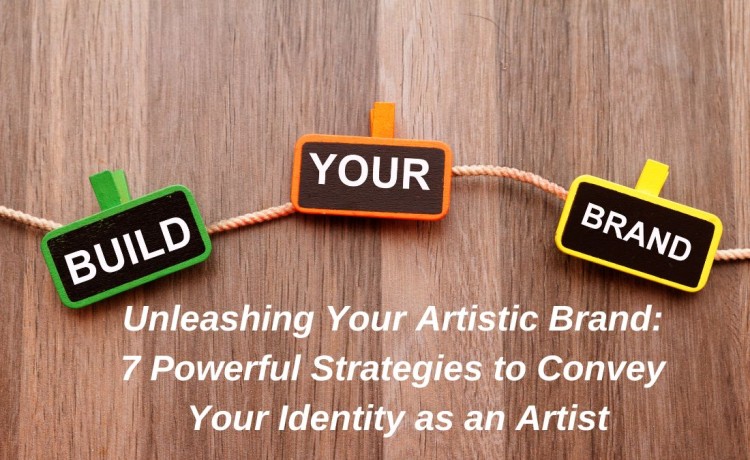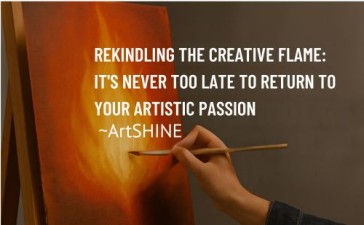As an artist, conveying your brand identity to clients is crucial for establishing a strong and recognizable presence in the art world. Your brand identity encompasses the unique qualities, values, and personality that define you and your artistic endeavors. By effectively communicating your brand identity, you not only attract the right clients but also forge deeper connections with those who resonate with your artistic vision. In this article, we’ll explore key strategies and examples to help you convey your brand identity to clients effectively.
1. Define your artistic vision and core values.
Before you can communicate your brand identity to others, you need to have a clear understanding of what it represents. Take time to reflect on your artistic vision, the themes and messages you wish to convey through your work, and the core values that guide your creative process. This introspection will help you articulate your brand identity in a way that resonates with your target audience.
Example: Renowned sculptor and installation artist, Anish Kapoor, is known for his exploration of the concept of “the void” and challenging perceptions of space and form. His brand identity is deeply rooted in his philosophical approach to art and his dedication to pushing the boundaries of material and form.
2. Develop a consistent visual identity
Your visual identity is the face of your brand, encompassing elements such as your logo, color palette, typography, and overall aesthetic. Consistency is key when it comes to establishing a recognizable visual identity that clients can easily associate with your brand. Ensure that your visual elements are cohesive and align with the essence of your artistic vision.
Example: Yayoi Kusama, the renowned Japanese artist known for her vibrant polka-dotted installations and sculptures, has a strong visual identity characterized by her signature polka dot motif and bold use of colors like yellow and red. This consistent visual language has become an integral part of her brand identity.
3. Craft compelling artist statements and bios
Your artist statement and bio are powerful tools for conveying your brand identity to clients. These written pieces should concisely and eloquently articulate your artistic philosophy, inspirations, and the underlying messages or themes in your work. A well-crafted artist statement and bio can captivate clients and provide them with a deeper understanding of your brand identity.
Example: Kehinde Wiley, the renowned portrait artist known for his vibrant and powerful depictions of Black individuals in heroic poses, uses his artist statement to highlight his exploration of identity, representation, and the reclamation of narratives often overlooked in traditional Western art.
4. A cohesive online presence
In today’s digital age, your online presence is often the first point of contact for potential clients. Ensure that your website, social media platforms, and any online galleries or portfolios consistently reflect your brand identity. Use visuals, content, and language that align with your artistic vision and values, creating a cohesive and immersive experience for clients.
Example: Banksy, the anonymous street artist known for their provocative and socially conscious graffiti art, maintains a strong online presence through their Instagram account and website. Their posts and website design consistently convey the brand identity of a mysterious, anti-establishment artist dedicated to sparking conversations about societal issues.
5. Engage with your audience and community
Building a connection with your audience and fostering a sense of community around your brand is essential for conveying your brand identity. Engage with your followers and clients through social media, newsletters, artist talks, or workshops. Share insights into your creative process, inspirations, and the stories behind your works. This personal engagement helps clients develop a deeper understanding and appreciation for your brand identity.
Example: Ai Weiwei, the renowned Chinese contemporary artist and activist, is known for his active engagement with his audience through social media platforms like Instagram and Twitter. He shares not only his artwork but also his political and social commentary, reinforcing his brand identity as an outspoken advocate for human rights and freedom of expression.
6. Collaborate with like-minded brands and influencers
Collaborating with brands, organizations, or influencers that align with your artistic vision and values can be an effective way to reinforce your brand identity. These collaborations can expose your work to new audiences and demonstrate the authenticity of your brand identity through association with like-minded entities.
Example: Shepard Fairey, the street artist and graphic designer behind the iconic “OBEY” campaign, has collaborated with various brands and organizations that share his socially conscious and activist values. His collaborations with companies like Obey Clothing and Amnesty International reinforce his brand identity as an artist dedicated to provoking thought and promoting social change.
7. Consistently deliver exceptional work and client experiences
Ultimately, the most powerful way to convey your brand identity is through the quality of your work and the experiences you provide to clients. Consistently delivering exceptional artwork that aligns with your artistic vision and values, combined with outstanding client service and communication, will reinforce your brand identity and establish you as a trustworthy and reputable artist.
Example: Takashi Murakami, the renowned Japanese contemporary artist known for his “Superflat” style and blending of pop culture and traditional Japanese art, has built a strong brand identity through his unwavering commitment to artistic excellence and his ability to consistently produce thought-provoking and visually striking works.
Conveying your brand identity as an artist is an ongoing process that requires dedication, consistency, and a deep understanding of your artistic vision and values. By implementing the strategies outlined in this article, you can effectively communicate your unique brand identity to clients, attract those who resonate with your work, and forge lasting connections with your audience.
Want to learn more? We’re here to help you to take action, just like we’ve helped thousands of other entrepreneurs, business owners, and creative professionals all around the globe. Now is the time to let your passion SHINE. Now is the time to Make Tomorrow Today! To your success, Vinh Van Lam and Stuart Horrex Cofounders
ArtSHINE.com





